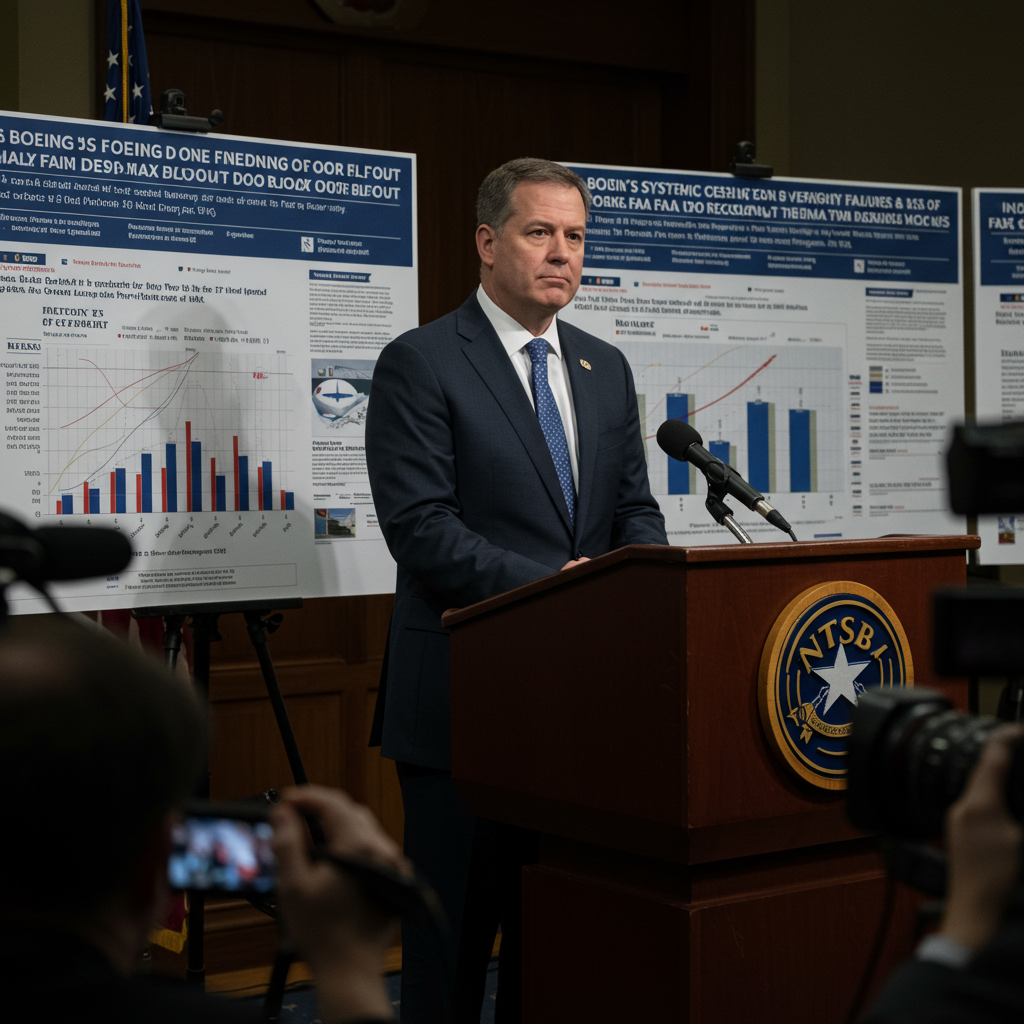In a scathing assessment, federal accident investigators have concluded that the terrifying mid-air blowout on an Alaska Airlines flight last year was entirely preventable. The incident, where a door panel detached from a Boeing 737 MAX 9 jet shortly after takeoff, highlighted deep-rooted quality control issues at Boeing and raised significant questions about the Federal Aviation Administration’s (FAA) oversight.
While miraculously no one was seriously injured among the 177 passengers and crew, the National Transportation Safety Board (NTSB) found the accident “never should have happened.” The board’s investigation pointed squarely at manufacturing failures, particularly four key bolts that were missing from the door plug designed to cover an unused emergency exit.
The Missing Bolts: A Critical Failure
The NTSB’s investigation determined that these crucial bolts were missing when the aircraft was delivered to Alaska Airlines in October 2023. Evidence suggests the door plug had been opened and re-installed at Boeing’s Renton, Washington factory in September 2023 to facilitate rivet repair work by Spirit AeroSystems employees. However, the four bolts were not put back on, and critically, there was no documentation recording this work or the fact that the bolts were missing.
NTSB Chair Jennifer Homendy criticized Boeing’s reliance on a process where a single human action – reinstalling the bolts – lacked a required record, calling it a “flaw in the system.” Investigators could not definitively identify who performed the work or why the bolts were not replaced.
Beyond Individual Error: Systemic Issues at Boeing
The NTSB emphasized that the accident was not the result of a single individual’s mistake but stemmed from “multiple system failures” within Boeing. The investigation uncovered issues including:
Lack of Documentation: A failure to properly document work performed during production, making it difficult or impossible to trace critical steps like the door plug reinstallation.
Inexperienced Workforce: Reports from NTSB interviews revealed that the Renton factory had lost many experienced workers and relied on staff, including contractors, with little formal training. Among the “door team,” only one person had prior experience removing a door plug, and they were absent when the work on the incident plane occurred.
Culture of Pressure: Testimony highlighted a pervasive environment of pressure and fatigue at Boeing and Spirit AeroSystems facilities. Workers reported consistent long hours (10-12 hours per day, 6-7 days a week) to meet production demands, raising concerns that pressure could lead workers to skip necessary steps. One subcontractor described a challenging “us-versus-them” dynamic between Boeing mechanics and outside contractors, feeling treated as “the cockroaches of the factory.”
Ignored Audit Findings: The NTSB noted a long history of similar production issues and instances of unauthorized work identified in “numerous, numerous” internal and FAA audits over the years that were not adequately addressed.
Whistleblowers coming forward since the incident and in prior congressional hearings have also painted a picture of a company that prioritized production speed over safety, with some employees reporting being told to “shut up” when raising concerns.
FAA Oversight Under Scrutiny
The NTSB also directed criticism towards the FAA, questioning “where the FAA was during all of this.” Homendy called the FAA the “absolute last barrier of defense” for aviation safety. The NTSB investigation and external reviews suggested the FAA had been “too hands-off” in its oversight of Boeing, focusing too heavily on paperwork audits rather than physical inspections and failing to identify persistent, systemic production-quality issues despite years of warning signs.
Harrowing Moments and Prior Warnings
While the safe landing was called “nothing short of a miracle,” the experience for those on board was terrifying. The sudden decompression caused chaos: the cockpit door burst open, items were sucked out of the cabin, and passengers endured the intense noise and wind. One flight attendant struggled to close the door, and pilots had to communicate via hand signals. One crew member recounted comforting a mother who feared her son had been blown out of the gaping hole.
Adding to concerns, the specific aircraft had reportedly experienced pressurisation warnings on three previous flights in the days leading up to the blowout. Alaska Airlines had restricted the plane from long flights over water as a precaution, but a planned maintenance check had not been completed before the incident occurred. The NTSB noted it’s unclear if these prior warnings were directly linked to the blowout.
Aftermath and Path Forward
In the wake of the incident, the FAA took significant action, including grounding 171 Boeing 737 MAX 9s globally for inspections, capping Boeing’s 737 production rate, and increasing inspectors at Boeing and Spirit factories. Boeing has publicly accepted accountability, with leadership changes announced and promises made to strengthen quality control and employee training. The company is reportedly developing design modifications for door plugs to prevent future incidents.
Despite these steps, the NTSB’s findings underscore that the Alaska Airlines door blowout was a direct consequence of long-standing, known manufacturing and oversight deficiencies. The investigation continues, with further scrutiny expected on workplace culture and safety management systems at both Boeing and the regulatory body tasked with ensuring the safety of air travel.




